Battleships like "Sevastopol": success or failure? Part of 1
The first dreadnoughts of the Russian imperial fleet, the Baltic Sevastopoli, in the Russian-language press, received the most contradictory characteristics. But if in some publications the authors called them perhaps the best in the world, today it is widely believed that battleships of the Sevastopol type were a deafening failure of domestic design thought and industry. There is also an opinion that it was precisely design miscalculations that did not allow Sevastopol to be put out to sea, which is why they stood the whole war behind a central mine obstacle.
In this article I will try to understand how fair the listed estimates of this type of battleships are, and at the same time I will try to disassemble the most famous myths associated with the first Russian dreadnoughts.
Artillery
If there is something in which all (or almost all) domestic sources agree, it is in the high estimate of the artillery of the main caliber of battleships of the “Sevastopol” type. And not without reason - the power of a dozen twelve-inch guns is amazing. After all, if we look at the ships being laid in other countries at the same time as Sevastopol, we will see that ... Sevastopoli was laid in June 1909 of the year. At this time, recently laid-out (October 1908 - March 1909) Dreadnoughts of the Ostflesland type (total of eight 12-dm guns in the side salvo) were being built in Germany and they were preparing to lay down Kaiser-type battleships that were formally capable of firing 10 twelve inches on board . But because of the unfortunate location, the middle turrets could shoot on one side only in a very narrow sector, so that German dreadnoughts can write 10 twelve-inch guns into a side salvo only with a very big stretch. And this is despite the fact that the Kaiser series was laid from December 1909 to January 1911.
In France, Sevastopol does not have the same age as the “Courbet” dreadnought, the Third Republic pawned only in September 1910 of the year, but even he had only 10 guns in the side salvo.
In the US, in March 1909, two Florida-style dreadnoughts were laid, all with the same 10 twelve-inch implements (to be fair, the location of the towers of the American and French battleships allowed the full-fledged 10 to fire in the volley, unlike the German Kaiser ), but Wyomingi, which had a dozen 12-dm guns, were laid only in 1910 year (January-February).
And even the Lady of the Seas of England, a month after the laying of the domestic Sevastopol, begins the construction of two dreadnoughts of the Colossus type, all with the same ten 12-dm guns.
Only the Italians, almost simultaneously with Sevastopol, laid down their famous Dante Alighieri, which, like the Russian dreadnoughts, had four three-gun towers of twelve-inch guns capable of firing from all their 12 trunks aboard.
On the one hand, it would seem that ten guns or twelve are not too big a difference. But in fact, a dozen guns gave the ship a certain advantage. At that time, it was believed that effective shooting required firing at least four-gun salvoes, and where the battleship with 8 guns could give two four-gun salvoes, and the battleship with ten guns - two five-guns, Sevastopol type linkors could give three four gun salvo. There was such a practice as shooting a ledge - when the battleship fired a four-gun salvo and right there without waiting for it to fall - one more (adjusted for the range, say, in 500 meters). Accordingly, the main gunner was able to assess the fall of two of his volleys at once against the enemy ship - so it was easier for him to correct the sights of the guns. And here the difference between the eight and ten guns on the ship is not too significant - a ten-armored battleship could give instead of four-guns - five-guns volleys, which were easier to watch, but nothing more. Well, and domestic battleships had the opportunity to shoot a double ledge - three four-gun salvos, which made it easier to adjust the fire. It is clear that the advantages of the ship gives a quick adjustment.
Thus, a dozen guns of the domestic battleship, in addition to the increase in firepower relative to the 8-10-gun import dreadnoughts, also gave him the opportunity to quickly shoot at the enemy.
But that's not all. In addition to superiority in the number of barrels and potentially faster shooting, immaculate materiel speaks in favor of the artillery of the first Russian dreadnoughts, namely, the remarkable Obukh 305-mm / 52 guns (the figure after the bar is the length of the barrel in calibers) and the heavy 470,9 kg 1911 model projectiles
Virtually all sources chorus sing our hosanna to our twelve-inch studs - and deservedly so. It is possible that this domestic artillery system was at that time the most formidable twelve-inch weapon in the world.
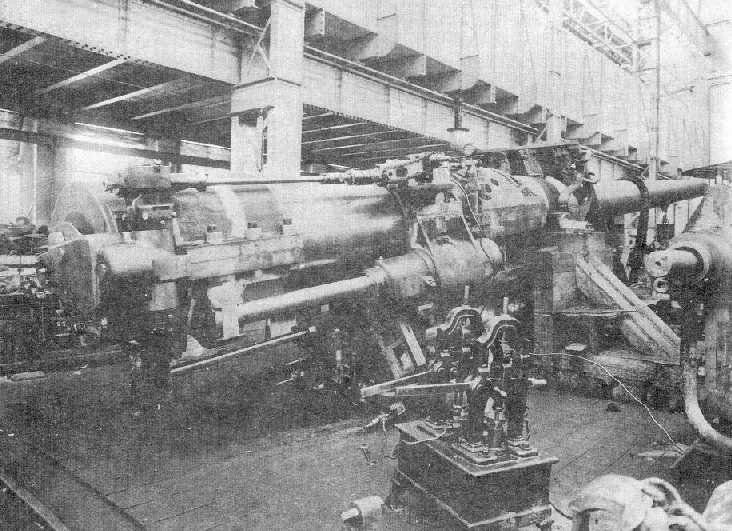
Although it is rather difficult to compare Russian guns with their foreign competitors.
The British first armed their dreadnoughts and battlecruisers with 305-mm / 45 Mark X guns. It was a good artillery system, firing a 386 kg projectile with an initial speed of 831 m / s, but still the British wanted more. And rightly so, because their main opponents, the Germans, created an artillery masterpiece, the 305-mm / 50 SK L / 50 cannon. She was considerably better than the English Mark 10 — shells of the 405 kg projectile were accelerated to speeds in 855 m / s. The British did not know the characteristics of the newest Krupp product, but they believed that they should certainly surpass any competitors. However, an attempt to create a fifty-caliber cannon was not particularly successful: the long-barreled artillery did not work in England. Formally, the new British 305-mm / 50 came close to its German counterpart - 386-389,8 kg shells accelerated to 865 m / s, but the gun was still considered unsuccessful. There was no special increase in armor penetration (although, in my opinion, English shells should be blamed), but the gun turned out to be heavier, the barrel vibrated fairly when fired, reducing the accuracy of shooting. But the longer the gun barrel, the greater the initial velocity of the projectile can be obtained, and the improvement of the English guns 305-mm / 45 has already reached the limit. And since the British long-barreled guns did not come out, the British went the other way, returning to the 45-caliber trunks, but increasing the caliber of the guns to 343-mm ... Surprisingly, the failure of the British to create a powerful and high-quality 305-mm artillery system largely predetermined their transition to a larger caliber than the 305-mm. There would be no happiness, but misfortune helped.
The Russian 305-mm / 52 artillery system was originally created according to the concept of “light projectile - high initial speed”. It was assumed that our gun would shoot 331,7-kg shells with an initial speed of 950 m / s. However, it soon became clear that such a concept was completely flawed: although at a short distance the light projectile accelerated to unthinkable speed would have superiority in armor penetration over heavier and slower English and German projectiles, but with the increase of the battlefield this superiority was quickly lost - the heavy projectile is slower lost speed than light, and given the fact that the heavy projectile also had great power ... They tried to correct the error by creating a heavy-duty 470,9-kg projectile, which was not equal in German however, everything has its price - with such projectiles, the Russian artillery system could only fire at an initial speed of 763 m / s.
Today, “on the Internet”, the low speed of the Russian projectile is often reproached for our twelve-inch and proves using armor penetration formulas (including the famous Marr formula) that the German SK L / 50 had more armor penetration than the Obukhov 305-mm / 52 . By the formulas, maybe it is. But the thing is ...
In the Battle of Jutland from 7 shells in Jutland, Xiongs of the Lion, Princess Royal and Tiger battleships penetrated the 229 battle cruisers. Of course, it can be assumed that not all of these 3 shells were 7-mm, but, for example, two shells that fell into the 305-mm Lion armor-belt were not pierced, and this could only be 229-mm German shells ( for "Lyon" fired at "Lutz" and "Koenig"). In this case, the distance between the British and British ships fluctuated within 305-65 KBT. At the same time, both the Germans and the British walked in the wake columns, having their opponents opposite, so it is hardly possible to sin on the fact that the shells hit at acute angles.
At the same time, the notorious shelling of “Chesma” in 1913, when elements of booking of “Sevastopol” type battleships were reproduced on the old battleship, showed that 229-mm armor penetrates even with a high-explosive projectile at an angle of 65 encounter at 65 kbt. and at meeting angles close to 90 hail, the 229-mm slab is punched even with 83 kbt! In this case, however, the explosion of the projectile occurs during the overcoming of the armor plate (which, in general, is natural for the high-explosive projectile), however, in the first case, a significant part of the mine was “brought” inside. What can I say about the armor-piercing projectile sample 1911 g? This repeatedly holey 254-mm armor (cutting) at a distance of 83 KBT!
Obviously, if there were Russian obuvki on the Kaiser ships firing 470,9-kg with Russian shells - from 7 shells that hit 229-mm armor belts of “Admiral Fisher’s cats”, the armor would be pierced not by 3, but much more, maybe, all 7 shells. The fact is that armor penetration depends not only on the mass / caliber / initial velocity of the projectile, which take into account the formulas, but also on the quality and form of this projectile itself. Perhaps, if we were to make Russian and German cannons fire with similar shells, the armor penetration capability of the German artillery system would be higher, but taking into account the remarkable qualities of the Russian projectile, it turned out that the main battle distances of battleships of the First World War (70-90 kb) Russian gun showed better performance than the German.
Thus, it would not be an exaggeration to declare that the power of the artillery of the main caliber of the first Russian dreadnoughts was considerably superior to any 305-mm battleship of any country in the world.
“Allow me! - a meticulous reader can say here. “And why are you, dear author, completely forgot about the 343-mm British guns of the British super-dreadnoughts, who plowed the seas, when the Russian Sevastopoli was still in completion ?!” I did not forget, dear reader, they will be discussed below.
As for the mine artillery, the 16 of hundred-twenty-millimeter Russian cannons provided ample protection from enemy destroyers. The only complaint was that the guns were too low above the water. But it should be borne in mind that the flood of anti-mine caliber guns was the Achilles heel of many of the then battleships. The British decided the issue radically, transferring the guns to the superstructures, but this reduced their security, and even had to sacrifice caliber, limiting themselves to 76-102-mm guns. The value of such a decision is still dubious - according to the views of the time, destroyers are attacking ships already damaged in an artillery battle, and all the power of anti-mine artillery loses meaning if it is disabled by that time.
But besides the quality of artillery, the fire control system (FCS) became an extremely important element of the ship’s combat power. The scope of the article does not allow me to properly address this topic, I will only say that the OMS in Russia were taken very seriously. By the 1910 g, the Russian fleet had a very sophisticated Heusler system of the 1910 model, but still it was impossible to call it a full-fledged OMS. The development of a new MSA was entrusted to Erickson (in no case should this be considered a foreign development - the SLA was handled by the Russian division of the company and the Russian specialists). But alas, as of 1912, the Erikson's OMS was still not ready, the fear of being left out of the OMS led to a parallel order to the English developer, Pollen. He, alas, didn’t have enough time either - as a result, the “Sevastopol’ ”OMS was a“ hodgepodge ”from the Heusler system of the 1910 sample, into which the individual devices of Erikson and Pollan were integrated. I wrote in sufficient detail about the battleship OMS here: http://alternathistory.org.ua/sistemy-upravleniya-korabelnoi-artilleriei-v-nachale-pmv-ili-voprosov-bolshe-chem-otvetov. Now I will confine myself to stating that the British had the best SLA in the world, and ours were approximately at the level of the Germans. True, with one exception.
In German “Derflinger” there was a place to be 7 (in words - seven) range finders. And they all measured the distance to the enemy, and the average value fell into the automatic machine for calculating the sight. At the domestic "Sevastopol" initially there were only two range finders (there were also so-called Krylov range finders, but they were nothing more than improved micrometers from Lyuzhol-Myakishev and did not provide high-quality measurements at large distances).
On the one hand, it would seem that these range finders provided the Germans with a quick reference in Jutland, but was that so? The same "Derflinger" shot only from the 6 of the volley, and even then, in general, by chance (in theory, the sixth volley was supposed to give a flight, the main gunner of the "Derflinger" Haze tried to take the British into the fork, however, to his surprise, a covering occurred). "Goeben", in general, also did not show brilliant results. But it is necessary to take into account that the Germans still shot better than the British, perhaps some merit of the German rangefinders is in this. My opinion is this: in spite of some lagging behind the British and (possibly) from the Germans, the domestic SLA installed at Sevastopol was, nevertheless, quite competitive and did not give the “sworn friends” any decisive advantages. During exercises, battleships of the “Sevastopol” type were shot at targets at a distance of 70-90 kbt on average over 6,8 minutes (the best result was 4,9 minutes), which was a very good result.
True, “on the Internet” I came across criticism of Russian SLA on the basis of the firing of “Empress Catherine the Great” on the Black Sea, but there it should be borne in mind that both “Geben” and “Breslau” did not conduct a proper fight, but tried with all their might to escape , by maneuver, knocking down the tip-off to our battleship, and the light cruiser also set up a smoke curtain. All of this would have had an impact on the effectiveness of the shooting of German ships, but they had absolutely no business whatsoever before - they only thought about running without looking back. In this case, the shooting distance was usually much more than 90 kb, and most importantly - on the Black Sea dreadnoughts there was ONLY a Heusler system arr. 1910, Erickson and Pollan’s devices were not installed on these battleships. Therefore, to compare the Black Sea "Mary" and the Baltic "Sevastopoli" on the quality of the LMS is in any case incorrect.
Reservation
If most of the sources respond to the artillery weapons of battleships of the “Sevastopol” type to a superlative degree, then the reservation of our dreadnoughts is traditionally weak and completely inadequate. The foreign press of those times generally compared the Russian battleships with the British Lyon-type battlecruisers who had 229-mm armor. We will try to compare and we.
Here is an English Fisher kitty reservation scheme:
And here is the Russian "Gangut":
Since many of us are too busy with a magnifying glass in our hands to look for the thickness of armor on not too clearly traced schemes, I will have the courage to comment on the above. I take the battleship Gangut scheme in the middle, paint a tower on it (do not shoot at the artist and don’t rush with empty bottles, draw as he can) and put down the thickness of the armor. After that, a red felt-tip pen depicts the most obvious flight paths of the enemy shells:
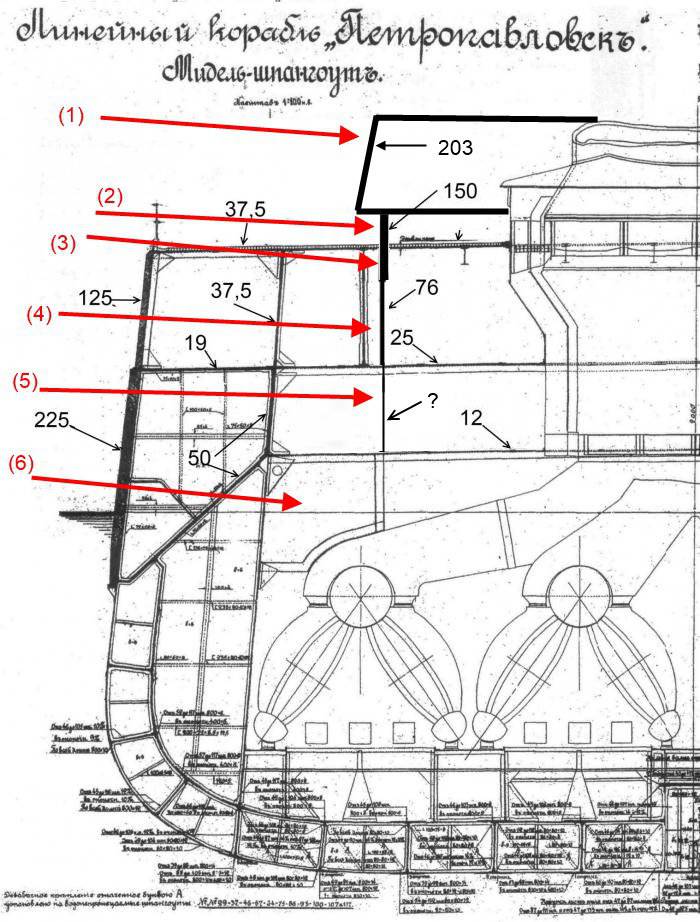
And now a little analysis. The trajectory (1) - getting into the tower, there is an armor for Gangut 203 mm, for Lyon - 229 mm. Englishman has an advantage. Trajectory (2) - hitting barbet above the upper deck. Gangut has 152 mm there, Lion has all the same 229 mm. Obviously, here the English battle cruiser leads by a wide margin. Trajectory (3) - a shell pierces the deck and crashes into the barbet under the deck. The "Gangut" enemy projectile will have to overcome first the upper armored deck (37,5 mm) and then 150 mm barbet. Even if you just add up the total thickness of the armor, you get 187,5 mm, but you need to understand that the shell beats the deck at a very unfavorable angle. The Englishman's upper deck is not armored at all, but the barbet under the deck is thinned to 203 mm. We diagnose approximate equality of protection.
Trajectory (4) - projectile enters the ship. Gangut is protected from it by 125 mm upper armor belt, 37,5 mm armor reassembly and 76 mm barbet, and all in all - 238,5 mm armor, the Lion in this place is not armored at all, so the projectile will meet all the same barbet 203 mm - advantage for the Russian battleship.
The trajectory (5) - the strike of the enemy projectile will be assumed by the very high main 225 mm armor "Gangut", behind it - 50 mm armor reassembly and then - all the same barbet, but alas, I did not know if he had a reservation at this level. I believe that at least an inch, yes I had. However, even if not, 225 mm + 50 mm = 275 mm, while the English battle cruiser is much worse.
Both the Russian and the Englishman's main armor belts are almost equal - 225 mm and 229 mm. But battleships of the “Sevastopol” type had an 5-m armored belt, while the British battleship was only 3,4 m. Therefore, where the Russian battleship has 225 mm armor, the British battleship had only six-inch armor. A mighty 203-mm barbet behind it was thinned to some three inches. Total - British 228 mm armor against mm 275 + unknown armor barbet Russian.
But this is still half the trouble, and the trouble is that this calculation is true only for the middle tower of the battlecruiser. Indeed, besides the thickness of the main armor belt, its height and length are important. Using the example of “Trajectories (4)”, we have already seen what the insufficient height of the main armored “Lion” led to, but now it’s time to remember that if the Russian Dreadnought’s 225 mm Russian dreadnought covered all its Barbet's 4, then the English 229 mm were protected only by machine and boiler rooms , yes, the middle tower, since it was packed between them ... The bow and stern towers "Lion" covered not six, but only five-inch armor - that is, the total thickness of the armor protecting the cellar did not exceed 203 mm, but in a small area aft tower (where the five-inch belt replaced four inch) and at all 178 mm!
Trajectory (6) - Russian ship is protected by 225 mm main armor belt and 50 mm bevel, British - 229 mm armor belt and 25,4 mm bevel. The advantage again in the Russian battleship. True, the Englishman has 1,5-2,5 armored inch ammunition in the ammunition cellar, so it can be said that the protection of the cellars on this trajectory in Gangut with Lion is approximate equality, but the machine and boiler rooms in Gangut are protected somewhat better.
In general, the following conclusion suggests itself. The Russian battleship is weaker than the reservation of towers and barbet above the upper deck, and everything below is armored as or even significantly better than the English ship. I would venture to say that the Russian ship has significantly better protection than the British battleship. Yes, the towers are less armored, but how fatal is it? As a rule, a direct hit by an enemy shell caused the tower to remain silent, regardless of whether the armor was pierced or not. Here, for example, the case of the “Princess Royal” in Jutland - German (and, according to Puzyrevsky, 305-mm), the projectile falls into the 229-mm armor plate of the tower and ... does not break through it. But the slab is pressed inward, and the tower is jammed.
By the way, what's interesting is when I wrote that only three out of seven German shells pierced the 229-mm armor of the British ships, I wrote only about hitting armor. And if we count this tower, it turns out that only three of eight armor penetration? In fact, there was a ninth hit - in the 229-mm armor of the fourth tower of the Tiger battlecruiser. The shell still pierced the armor, and ... nothing happened. The effort expended in overcoming the armor plate was mutilated by the projectile — its unexploded remains, devoid of “head” and a detonator, were found after the battle ... In this case, the armor was pierced, but what was the use of that? Not so badly defended 229-mm armor, as some think ... But generally speaking, there were cases when the German 305-mm shells held even 150-mm armor. In this case, the defeat of the tower, with or without armor penetration, in some cases caused a fire, which, if penetrated into the cellars, could threaten to detonate the ammunition. But not always. For example, in the battle at Dogger Banks, a British shell struck the barbet of the Zeidlita aft tower - there was a fire, both the stern towers were out of order, but there was no explosion. In Jutland, Derflinger and Seidlits lost 3 turrets of the main caliber, including armor penetration - but the battlecruisers did not explode. The fact is that the main role in the detonation of the cellars was played not by the thickness of the tower armor, but by setting up the sub-battalions and supplying ammunition to the guns - the Germans, after the “Seidlitz” experiment at Dogger Bank, provided for constructive protection against the penetration of fire into the cellars. Yes, and the British there were cases where the penetration of armor towers was not accompanied by a disaster.
In other words, weak booking of towers and barbets above the upper deck, of course, does not paint the ship, but does not condemn it to death. But below the upper deck, Sevastopol-type battleships were much better protected than English battlecruisers.
"So what? - the reader will ask me. “Just think, you have found with whom to compare - with the English battle cruiser, a recognized loser in terms of protection, because three such ships flew into the air in Jutland ...”
So, not so. If we reject the stamps imposed on us by widely replicated points of view, we are surprised to find that the same “Lion” got hit by the German main caliber in the Dogger Bank 15, but was not going to drown or explode. Yes, and 12 hits in Jutland did not become a tragedy for him. “Princess Royal” “did not notice” eight hits in Jutland, and “Queen Mary”, the only dead battlecruiser of this type, received 15-20 hits of the praised German shells. And the cause of the ship’s death was the hit in the area of the nose towers (and, apparently, struck the barbet of tower “B”), which caused the explosion of ammunition that tore the ship into two parts in the area of the foremast ... Explosion in the tower “Q” , in essence, was already a miserycord, “a blow of mercy” that finished off the ship. In other words, the battle cruiser of the British was killed by a strike in the place of his apparent weakness, where his cellar was covered from the force of 203 mm of aggregate armor. But if “Sevastopol” with its 275 mm (or even with a plus) the total cellar protection would have been in its place, would it have exploded? Oh, something serious doubts gnaw at me ...
A word to the famous Tirpitz, who seems to be the last person in this world who is interested in praising the English battlecruisers:
"The advantage in the battle of Derflinger is characterized by the fact that he could penetrate the thickest armor of the British cruiser from a distance of 11700 meters, and the British cruiser needed to go up to a distance of 7800 meters."
But excuse me, because the recommended 11700 meters are just a little more than 63 cables! It seems Tirpitz was right: already at distances in 70-80 kbt German shells pierced the English 229 mm at best through time! And after all, what is interesting is that the “Queen Mary” is described as “sudden”, that is, “having killed” a dozen shells, the battlecruiser did not at all give the impression of a trough beaten up in trash, unable to continue the fight?
Why are there battlecruisers! The British Warrior cruiser Warrior, who fought Admiral Hipper's squadron for 35 minutes, received 15 280- and 305-mm projectile hits, but was still afloat 13 hours after that.
Should I remind you that the perfectly protected Lutz was killed by 24 British shells, which turned him into a ruin barely floating on the water?
The vast majority of people interested history the fleet, quite satisfied with the common stamp that "the battlecruisers of Germany demonstrated miracles of survivability, while the British were worthless" eggshell armed with hammers. But is it really? Of course, the German cruisers were much better armored, but did they provide this overwhelming superiority in combat stability?
This is a rather complicated question, and it is possible to answer it only by undertaking a separate study. But the Russian dreadnoughts of the “Sevastopol” type, occupying an intermediate position between the British and German battleships in their reservations, certainly were not “whipping boys” possessing “useless combat stability”.
The version of the unprecedented weakness of booking Russian dreadnoughts was born as a result of the shelling of the former "Chesma", but ... it must be remembered that Chesma was fired almost the best 305-mm gun in the world, probably the best 305-mm projectile in the world. And then everything will immediately fall into place.
According to the results of the shooting of "Chesma" (experimental vessel №4, if you will) the artillery department of the GUK made an interesting conclusion: when meeting a projectile and armor at an angle from 70 to 90, hail (not counting the angle of projectile falling) Russian 305-mm projectile at 70 KBT punched 305-365-mm armor. And this is despite the fact that only cases were counted when a projectile pierced armor and exploded after it - if you lower the requirements until the projectile breaks when the armor penetrates, so the Russian projectile overwhelmed the 400-427 mm armor at the same angles ...
In general, if an alternative historical miracle happened, and the commanders of the German battlecruisers suddenly saw not six huge, high-breasted English battlecruisers, but low, four-sided Russian dreadnoughtt silhouettes flying over the waves, I was afraid that the Kaiser would reward Admiral Hipper posthumously. Yes, and the British certainly would not rejoice in replacing the German battle cruisers with Russian battleships.
Of course, the same English dreadnoughts, not to mention the German dreadnoughts, carried much more powerful armor than the Russian “Sevastopoli”. But she would have helped them in battle, that is the question.
Let's consider a hypothetical duel between the Russian “Sevastopol” and the British “Orion”. The overwhelming majority of those interested in the history of military fleets have an obvious answer. After removing the reference book from the shelf and opening it on the necessary page, we read: the thickness of the side armor of the “Sevastopol” is 225 mm, and the Orion is the whole 305 mm! English and Russian shells have a similar initial speed - 759 m / s and 763 m / s, respectively, but the Russian armor-piercing projectile weighs only 470,9 kg, and the British - 635 kg! We close the reference book and diagnose that a fight with Orion would be a perverted form of suicide for the Russian battleship ... Is that so?
But if we consider the booking of Orion more closely, then ...
Tower armor - 280 mm, barbety - 229 mm. This is much better than the Russian 203 mm and 150 mm, only chances to keep the Russian armor-piercing projectile of the 1911 model in the 70-80 distance from the British defense are virtually no chance. In other words, in the main battle ranges, the British artillery is completely vulnerable to Russian projectiles. Yes, the armor of the English towers is thicker, but what's the use of this?
The upper armored belt has a thickness of 203 mm, and this is better than the 125-mm board and the 37,8-mm armored bulkhead of the Russian battleship, but 8 inches to Russian shells is not an obstacle. True, at this level the Englishman’s artillery is better protected, the British battleship has 178 mm barbet, the Russian has only 150 mm above and 76 mm below. But on the next series of battleships, the British abandoned 178 mm barbet in favor of 76 mm, almost equaling the total thickness of the armor with the Russian Dreadnoughts.
And below the Englishman - the main bronepoyas. Here, it would seem, the advantage of the English battleship! But no - and the point is not that the British main armor belt is lower than that of the “Gangut” and is 4,14 m high against 5 m, because 4,14 m is not bad either. It turns out that the main armor belt "Orion" itself consists of two armor belts. Moreover, 305-mm thickness is only the bottom, and the top one is 229 mm.
The fact of the matter is that directories usually give the thickness of armor, but not the height and the area of the main armor belt. And the imagination subconsciously believes that on the battleships the heights and lengths of the armor belts are about the same, and the English 305-mm armor belt is given a priori palm. They forget that this armor belt does not even reach half the height of the Russian ... Will such armor defend much?
An analysis of the battles of the Russo-Japanese War shows that the main armored belts of the Russian and Japanese battleships (which approximately corresponded in height to the British Orion) were hit by approximately 3% of the total number of shells in the ship. In Jutland, the ratio was better - for example, 2,28-mm armor of English battleships such as Queen Elizabeth only 330 projectile from 3, which hit the dreadnoughts of this type, or 25%, got into 12-meter belts of the 3,4-mm armor. But the armored belt of the English battle cruisers "Lion", "Princess Royal", which had 25 meters of height and "Tiger", already assumed a quarter (XNUMX%) of the total number of hits.
But the most important thing is to keep 305-mm Russian armor-piercing projectile at a distance in 70-80 kbt even Orion’s 305-mm armor, if it could, then two times for the third. But behind it - almost nothing, only an inch (25,4-mm) bevel ...
The conclusion from this comparison is as follows. Yes, the British battleship is better armored, but at a range of 70-80 KBT its protection is quite vulnerable to the effects of Russian 305-mm projectiles. Here, of course, there is a counter-question - how does the armor of our battleships protect against English projectiles at the same distance?
But before we answer this question, it is worthwhile to dwell, perhaps, on the most common myth about Russian battleships.
To be continued ...
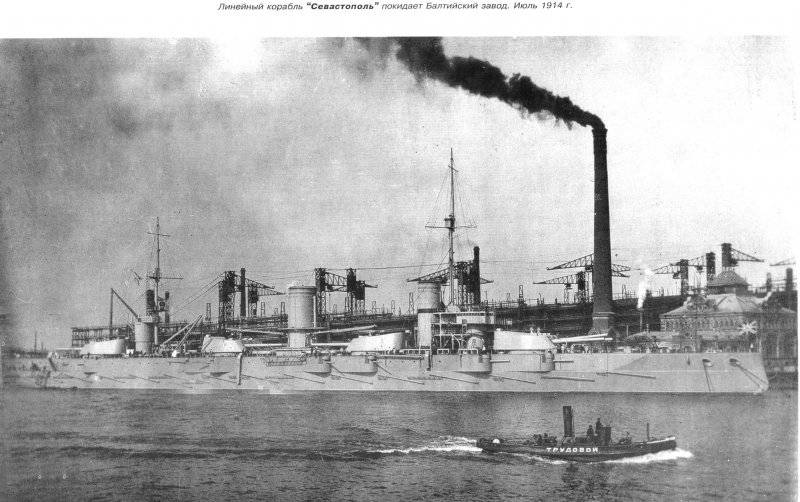
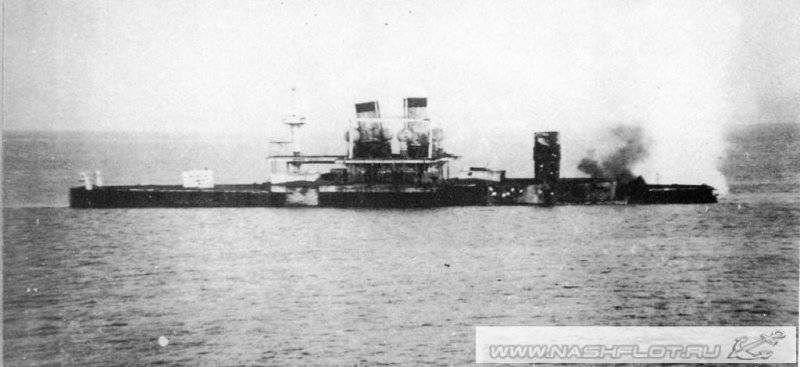
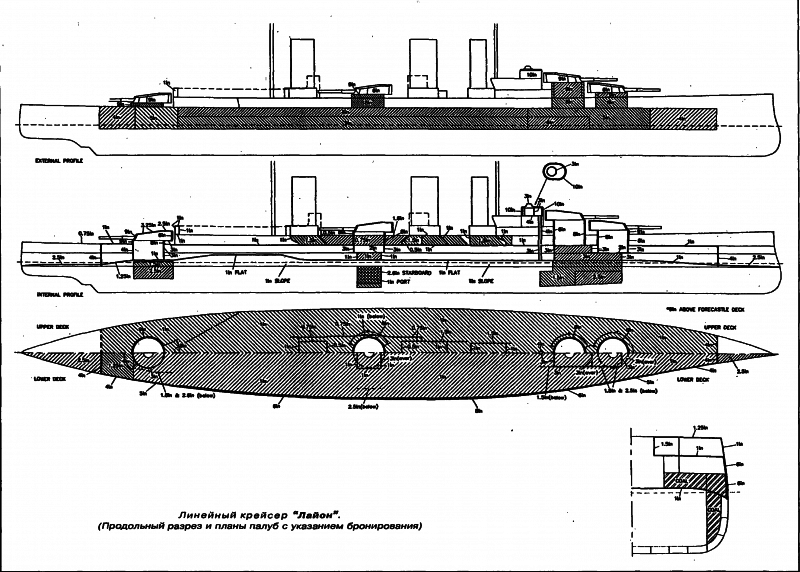
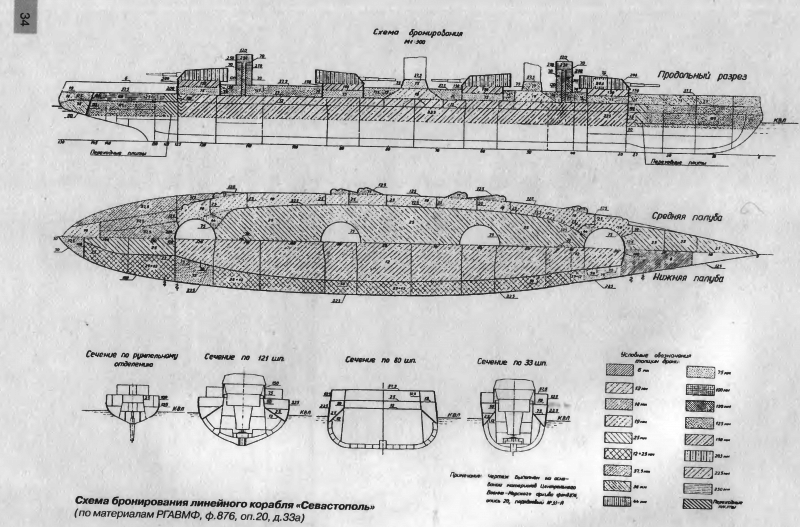
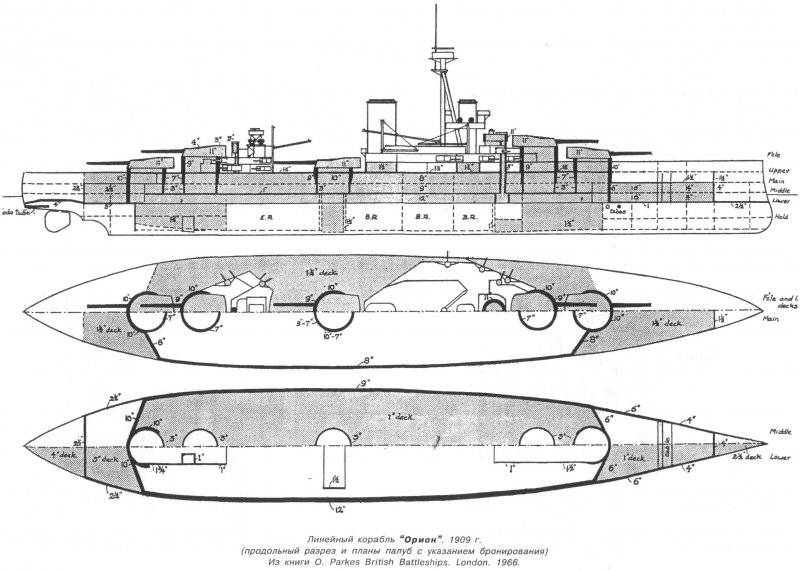
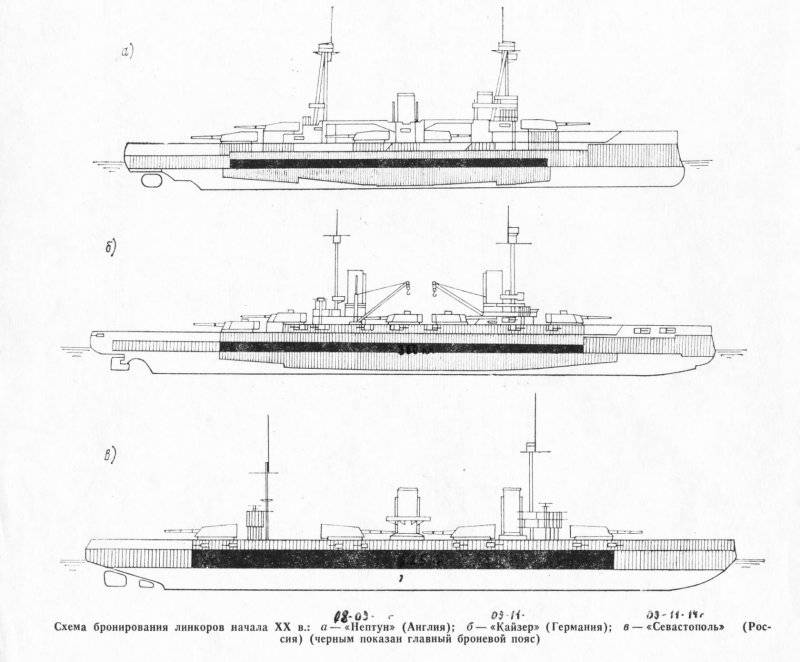
Information